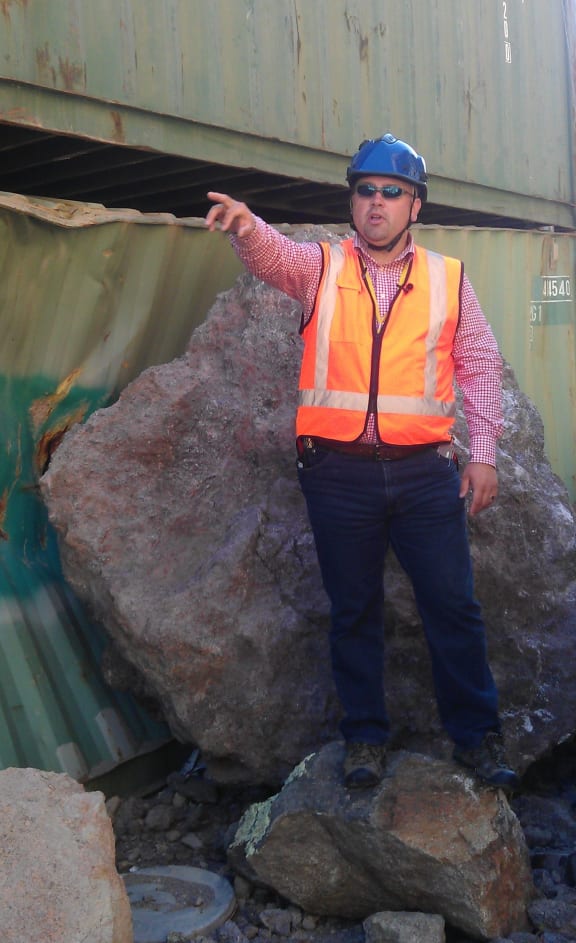The Labour Party says its plan for rockfall protection in areas of Christchurch's Port Hills will save money, as well as let some people stay in their homes.

CERA chief geotechnical engineer Jan Kupec says engineers have researched likely bounce heights and the potential for protective measures on some sites. Photo: RNZ
Canterbury recovery spokesperson Ruth Dyson announced the plan in Sumner on Monday, saying a Labour government and the Christchurch City Council would pay for rockfall protection work to save houses wherever it was economical to do so.
Ms Dyson said she hoped that up to 300 of the 511 red-zoned homes on the Port Hills could be saved.
That policy was welcomed by Port Hill resident Phil Elmey, whose house was deemed uninhabitable because of post-quake rockfall risk.
Mr Elmey said he and many other Port Hills residents believed protection work would be much cheaper than demolishing the homes. He said some design work had already been done, and could be implemented fairly quickly.
However, Canterbury Earthquake Recovery Minister believes Labour's policy would people at risk. Mr Brownlee said the proposal flies in the face of all the scientific and engineering analysis of the land he has seen and the move looks like a cynical attempt to get votes ahead of September's general election
Rock fall caused loss of life and substantial damage to some Port Hills homes in the aftermath of the damaging earthquake on 22 February 2011.
Geologists have since physically examined the size and stability of more than 10,000 rocks along the 14km ridge line in the Port Hills.
They sent the data to the University of Milan so that 3D mapping technology could be used to determine which houses would be at risk from problems such as boulder roll.
The Canterbury Earthquake Recovery Authority relied on the study to help reclassify the homes of 500 Port Hills residents. Chief engineer Jan Kupec said at the time that the study helped indicate likely bounce heights and the potential for protective measures.

